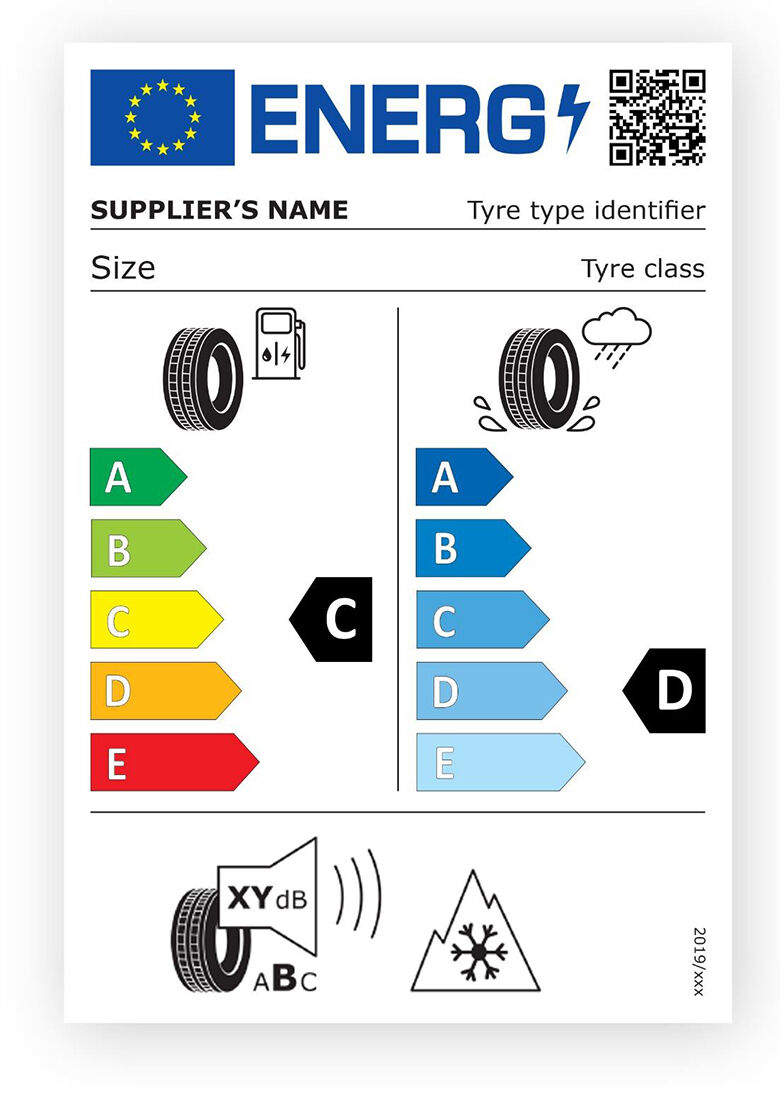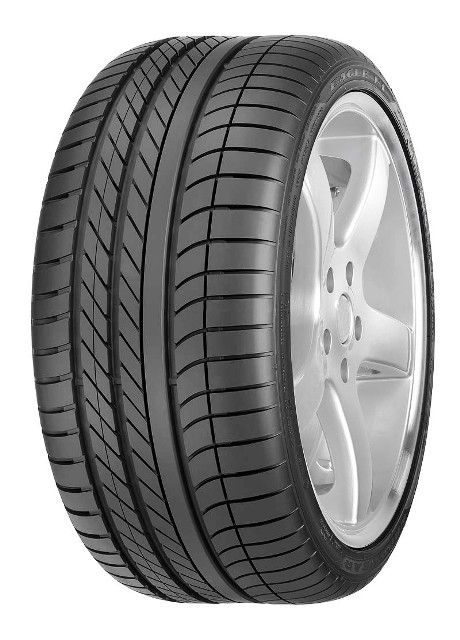
RunOnFlat 
Eagle F1 Asymmetric ROF
How it works
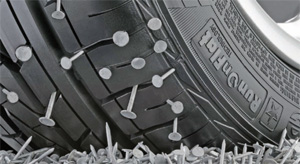 Goodyear's new RunOnFlat technology is based on the concept of reinforced sidewalls inside the tire. When a standard tire deflates, it simply collapses under the weight of the car, allowing the beads to come off the rim and the sidewalls to be squashed onto the road. The pressure totally destroys the tire within a few kilometers. The reinforced sidewalls in Goodyear's RunOnFlat tires keep the tire on the rim and succeed in carrying the weight of the car for up to 80 km after a puncture with complete air pressure loss.
Goodyear's new RunOnFlat technology is based on the concept of reinforced sidewalls inside the tire. When a standard tire deflates, it simply collapses under the weight of the car, allowing the beads to come off the rim and the sidewalls to be squashed onto the road. The pressure totally destroys the tire within a few kilometers. The reinforced sidewalls in Goodyear's RunOnFlat tires keep the tire on the rim and succeed in carrying the weight of the car for up to 80 km after a puncture with complete air pressure loss.
Technology
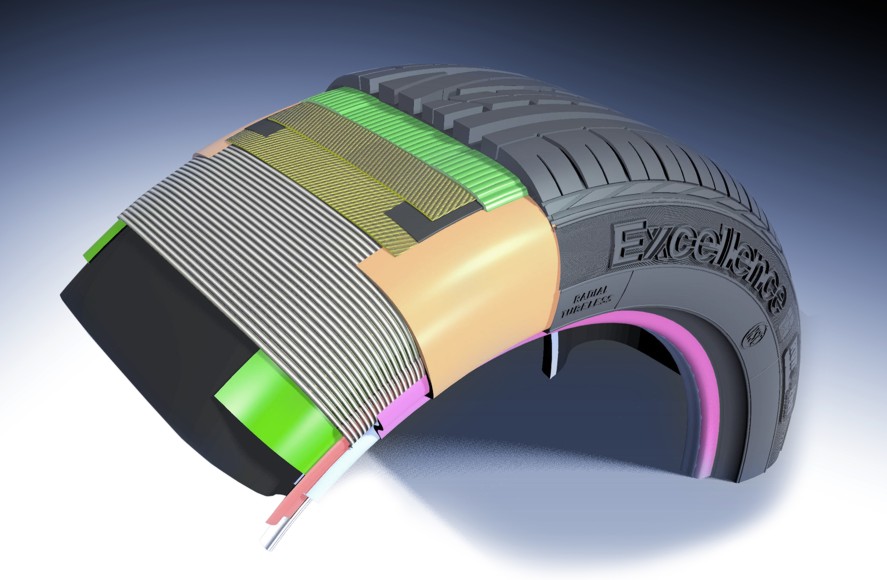
As a cutting-edge technology, RunOnFlat is still undergoing heavy development. While the basic system, consisting of reinforced tires together with a TPMS system, has been developed, tested and is now commercially available, there are more technical innovations and enhancements that are just around the corner. In the near future, as soon as your car's TPMS system tells you that your tire needs servicing, the nearest licensed service station will be automatically alerted through your car's GPS system, giving you directions to a site where qualified personnel will be awaiting your arrival, ready and able to get you on your way again as soon as possible.
Service
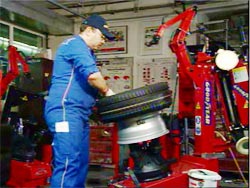
With over 1100 certified service stations across Europe, you are almost certian to find an authorized service point within driving distance after losing air pressure in a RunOnFlat tire. Access our Dealer Locator to find the authorized service station closest to your current location.
Repairs
RunOnFlat tires can be repaired after a puncture in the tread, but not in the sidewall. Because of the tire's unique reinforcing layers, it is not possible to apply the fabric-lined repair patch to the damaged area or carcass layer.
TPMS
TPMS stands for Tire Pressure Monitoring System, an advanced tire monitoring system that is recommended for all cars, but an absolute requirement for RunOnFlat tires. After all, without an on-board monitoring system for RunOnFlat tires, you wouldn't even know that you'd had a puncture and your tire required servicing. That is why RunOnFlat tires should only be fitted on cars that carries a TPMS system.
Indirect or direct TPMS
There are two different kinds of TPMS system: indirect TPMS systems do not measure air pressure directly from the tire, but calculate it on the basis of ABS/ESP signals. As there is no need for additional sensors, this solution is highly cost-effective while providing a basic and functional monitoring system. The disadvantage is that the system isn't very accurate. Direct systems employ sensors on the tire valves that transmit a radio signal to the car's bodywork. This highly accurate and reliable system also keeps track of tire temperatures while giving you the most detailed information on your tires' air pressure.
Definition
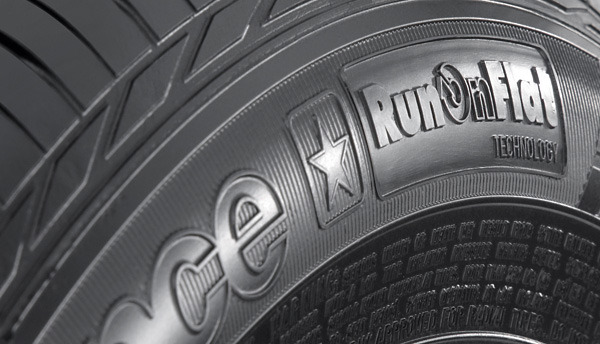
The Goodyear RunOnFlat tire is a tire with a remarkable extra feature: if needed, it can operate at least 80 km at up to 80km/h at very low or zero inflation. So even with a total loss of air pressure, the RunOnFlat tire lets the driver continue driving to a safe place where the tire could be examined.
In fact, the RunOnFlat system performs so well without air that a tire PRESSURE MONITORING SYSTEM (TPMS) is a necessary part of the tire package to alert the driver if a tire has lost inflation. A "FLAT tire" warning will appear on the TPMS if the inflation pressure of any tire drops below the flat tire preset warning pressure. See the vehicle's manual for information on this system.
Tire Fitment
Goodyear/Dunlop strongly recommend to fit RunOnFlat tires only on vehicles for which the car manufacturer has given a self supporting tire approval.
Maximum speed and distance at low air pressure
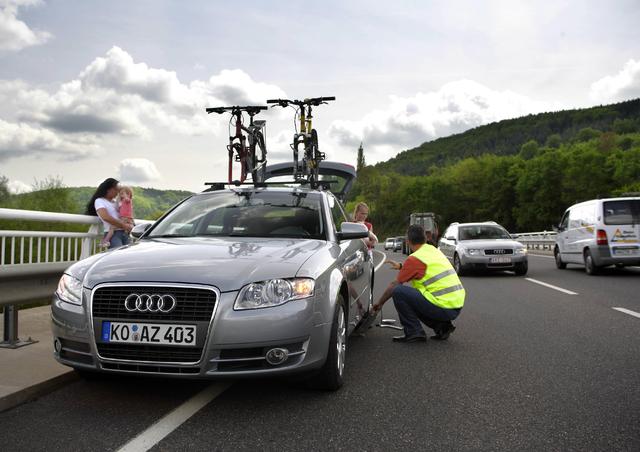
Although the RunOnFlat tire has been designed to give at least 80 kilometres of service at sustained speeds of up to 80 km/h at low or zero air pressure, after such extreme usage the tire may have to be replaced. To help prolong tire life it is recommended to keep the speed as much below 80 km/h as possible and to drive less than 80 kilometres. By doing so the probability to enable tire repairing will increase.
Note: For some vehicles the tire's RunOnFlat potential may extend beyond the 80 km / 80 km/h standard. This extended potential mileage only applies when used in combination with the vehicle indicated and of course provided that a TPMS is operational. The vehicle's owner manual always prevails over this policy.
Maintenance of RunOnFlat tires
As for any other tire, the inflation pressure should be checked and eventually corrected on regular basis by the vehicle's owner.
Damage inspection, mounting / dismounting and tire repair or replacement should be done by a tire or car dealer.
Tire inflation
Underinflation is the leading cause of tire failure. It reduces tire load capacity and allows excessive sidewall flexing, resulting in high heat generation. Maintaining proper inflation is the single most important thing that the tire owner can do to ensure tire durability and maximum tread life. Pressure checks should be made when the tires are cold. The recommended inflation pressure of the RunOnFlat tire is indicated in the vehicle's owner manual.
Speed rating
The Goodyear/Dunlop RunOnFlat tires fitted on a vehicle must carry a minimum speed rating as shown in the vehicle documents. Any RunOnFlat tire must be replaced with a RunOnFlat tire of identical type, size and speed rating.
Tire treadwear
Legal rules for tire treadwear in a Country apply to RunOnFlat tires.
"Low/flat tire" warning indicator
If the "flat tire" warning appears on the TPMS then it is important to determine the cause of this as soon as convenient. The driver should check the inflation pressure on all tires and if any are below the vehicle's manual recommendation then inflation pressure should be corrected. If the "flat tire" warning appears again then a visit to the vehicle's or to a tire or car dealer to have the system inspected should be made. Due to the design of the tire, the driver will probably not feel a major difference in the ride when the tire is deflated. But under the low or zero inflation conditions being indicated by the TPMS, he should limit his speed to 80km/h maximum, avoid hard cornering and severe handling manoeuvres.
Video
| Size | Width | Height | Rim | LI/SI | Special Details |
| 245/45R17 | 245 | 45 | 17 | 99Y | DOT2018, MO - Mercedes |
| 255/50R19 | 255 | 50 | 19 | 107W XL | * -BMW, SUV, DOT2019 |
| 285/45R19 | 285 | 45 | 19 | 111W XL | * - BMW, MFS |








